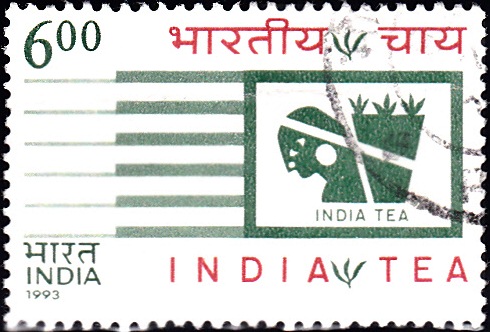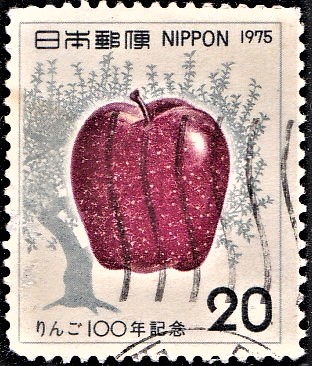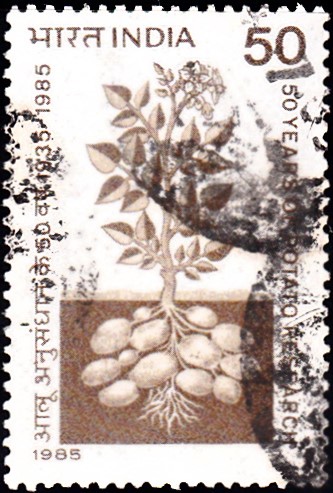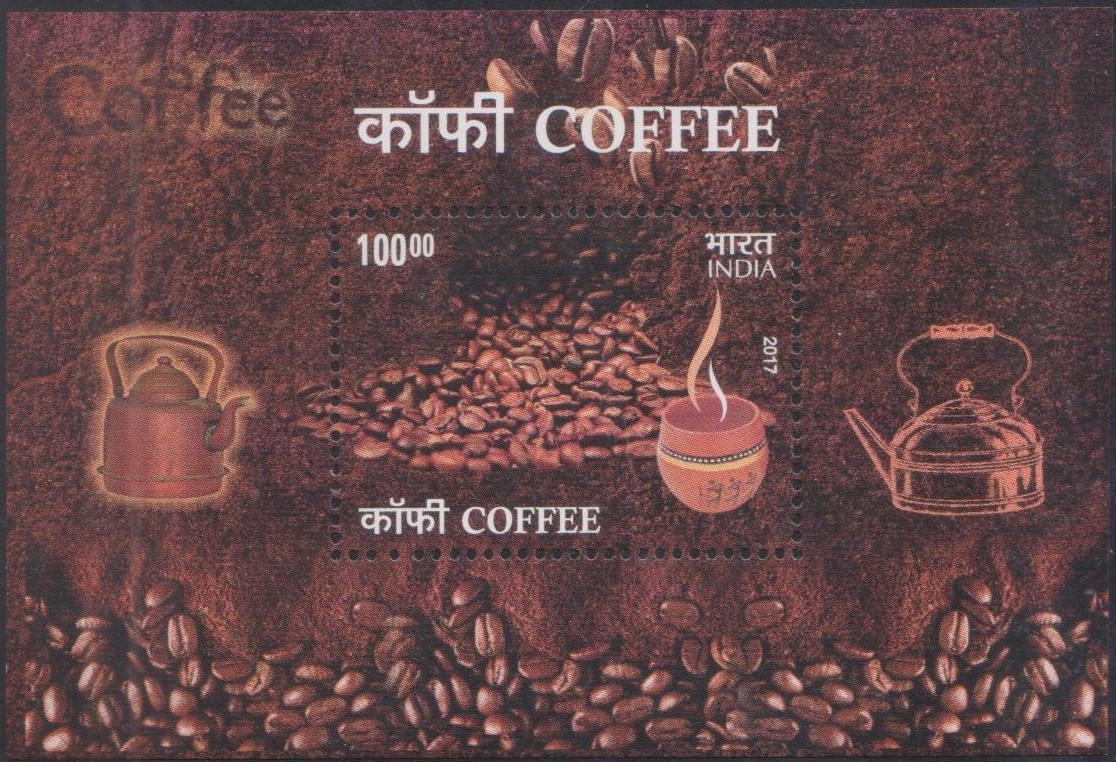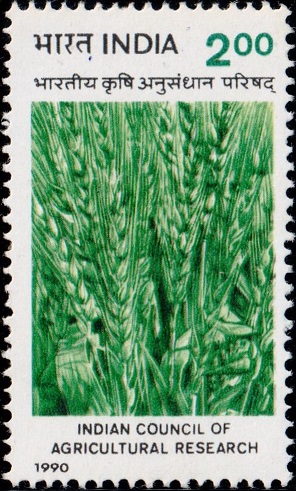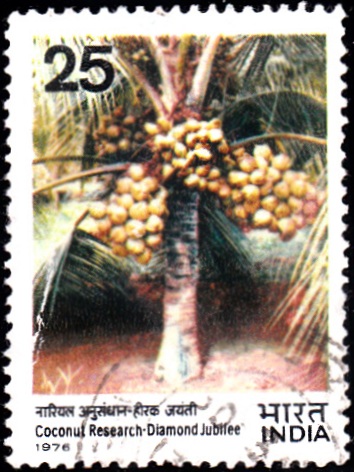
India on Coconut Research 1976
A commemorative postage stamp on the Diamond Jubilee of the Coconut Research :
Issued on Dec 27, 1976
Issued for : The Posts & Telegraphs Department is happy to bring out a postage stamp to commemorate the Diamond Jubilee of Coconut Research in India.
Description of Design : The stamp depicts a young hybrid (between tall and dwarf forms) coconut palm.
Type : Stamp, Postal Used
Colour : Multicolour
Denomination : 25 Paise
Overall size : 3.91 X 2.90 cms.
Printing size : 3.55 X 2.54 cms.
Perforation : 13 x 13
Watermark : Printed on unwatermarked adhesive stamp paper
Number printed : 30,00,000
Number per issue sheet : 35
Printing process : Photogravure
Designed and printed at : India Security Press
About :
- Literary classics of India have rightly termed the coconut tree as Kalpavriksha – the all-giving tree. It is also one of the five legendary Devavrikshas or Godly trees. The tree is capable of providing all the primary needs of man. It is one of the most important tree crops of the world and the most beautiful among the palms with its strong and long ringed trunk (up to 30 metres) surmounted at the top by a graceful crown of giant feather-like leaves.
- Every part of the tree finds a variety of uses for mankind. Oil is extracted from the dried kernel of the fruits. The kernel itself is used in an array of culinary preparations. The oil is not only a wholesome cooking medium but also has many other uses – in the manufacture of soaps, detergents, synthetic rubber, glycerine, etc. Coconut water is a delicious and nutritive drink. The tender kernel is a delicacy. The fibre from the husk has versatile uses for making ropes, mats, baskets, brushes, brooms,etc., and also for rubberised mattresses. The young inflorescence when tapped gives a sap which is a refreshing beverage when fresh, and on fermentation it gives toddy, a mild alcoholic drink. From the fresh sap sugar is also made. The shell finds varied usages, as fuel, drinking bowls, ladles, bangles, buttons, etc. The trunk of the palm is used as building material in almost all countries in the Tropics and is popularly called ‘porcupine wood‘. The mature leaves are plaited and used in thatching and basketry.
- In terms of geographical distribution coconut ranks first among the oil yielding crops as it is grown in as many as 76 developing countries. Interestingly, India‘s State ‘Kerala‘ literally means the land of coconuts. In this State with an area of 38,864 sq. km. and a population density of 549 persons per sq.km., a large percentage of the population is dependent on coconut for their livelihood. Currently the country produces 5361 million nuts annually from 1.1 million hectares of coconut plantations. Coconut contributes 1 per cent of the GNP and 2 per cent of the total agricultural income of India which ranks third in the world production of coconut.
- India was the first country to take up systematic research on coconut. Research work was started at Kasaragod and Nileshwar stations of the then Madras Presidency (now in Kerala State) in 1916. The Nileshwar station is now part of the Kerala Agricultural University. The Kasaragod station is the headquarters of the Central Plantation Crops Research Institute of the Indian Council of Agricultural Research since 1970. These centres are still among the leading coconut research centres of the world. Evolution of high and early bearing hybrids, development of coconut-based products management practices and cropping system and control of pests and diseases are notable achievements of research during the last six decades. The root wilt of coconut is a serious problem which is yet to be remedied and concerted efforts are under way to tackle this problem.
- This year marked the Diamond Jubilee of research on coconut. As part of the celebrations, an International Symposium on coconut was also organised at Kasaragod.
Subscribe
Login
0 Comments




